All To Be Conducted With Airplanes Rather Than Spacecraft
 Hurricanes, air quality, and Arctic
ecosystems are among the research areas to be investigated during
the next five years by new NASA airborne science missions announced
Thursday. The five competitively-selected proposals are the first
investigations in the new Venture-class series of low-to-moderate
cost projects established last year.
Hurricanes, air quality, and Arctic
ecosystems are among the research areas to be investigated during
the next five years by new NASA airborne science missions announced
Thursday. The five competitively-selected proposals are the first
investigations in the new Venture-class series of low-to-moderate
cost projects established last year.
The Earth Venture missions are part of NASA's Earth System
Science Pathfinder program. The small, targeted science
investigations complement NASA's larger research missions. In 2007,
the National Research Council recommended that NASA undertake these
types of regularly solicited, quick-turnaround projects.
This year's selections are all airborne investigations. Future
Venture proposals may include small, dedicated spacecraft and
instruments flown on other spacecraft.
"These missions are considered a 'tier 1' priority in the
National Research Council's Earth Science decadal survey. With this
selection, NASA moves ahead into this exciting type of scientific
endeavor," said Edward Weiler, associate administrator of the
agency's Science Mission Directorate in Washington.
The missions will be funded during the next five years at a
total cost of not more than $30 million each. The cost includes
initial development and deployment through analysis of data.
Approximately $10 million was provided through the American
Recovery and Reinvestment Act toward the maximum $150 million
funding ceiling for the missions.
Six NASA centers, 22 educational institutions, nine U.S. or
international government agencies and three industrial partners are
involved in these missions. The five missions were selected from 35
proposals.
The selected missions are:
Airborne Microwave Observatory of Subcanopy and
Subsurface. Principal Investigator Mahta Moghaddam, University of
Michigan
North American ecosystems are critical components of the
global exchange of the greenhouse gas carbon dioxide and other
gases within the atmosphere. To better understand the size of this
exchange on a continental scale, this investigation addresses the
uncertainties in existing estimates by measuring soil moisture in
the root zone of representative regions of major North American
ecosystems. Investigators will use NASA's Gulfstream-III aircraft
to fly synthetic aperture radar that can penetrate vegetation and
soil to depths of several feet.
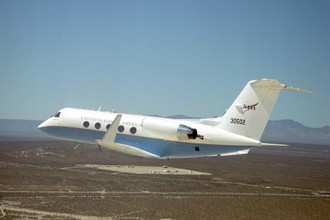
NASA Gulfstream III
Airborne Tropical Tropopause Experiment. Principal
Investigator Eric Jensen, NASA's Ames Research Center in Moffett
Field, CA.
Water vapor in the stratosphere has a large impact on Earth's
climate, the ozone layer and how much solar energy the Earth
retains. To improve our understanding of the processes that control
the flow of atmospheric gases into this region, investigators will
launch four airborne campaigns with NASA's Global Hawk remotely
piloted aerial systems. The flights will study chemical and
physical processes at different times of year from bases in
California, Guam, Hawaii and Australia.
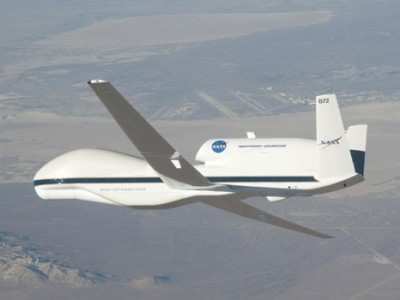
NASA Global Hawk
Carbon in Arctic Reservoirs Vulnerability Experiment.
Principal Investigator Charles Miller, NASA's Jet Propulsion
Laboratory in Pasadena, CA.
The release and absorption of carbon from Arctic
ecosystems and its response to climate change are not well known
because of a lack of detailed measurements. This investigation will
collect an integrated set of data that will provide unprecedented
experimental insights into Arctic carbon cycling, especially the
release of the important greenhouse gases such as carbon dioxide
and methane. Instruments will be flown on a Twin Otter aircraft to
produce the first simultaneous measurements of surface
characteristics that control carbon emissions and key atmospheric
gases.
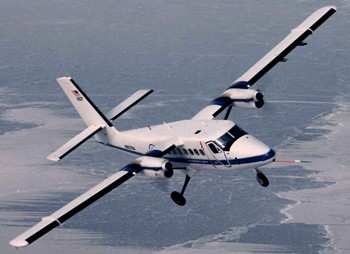
NASA Twin Otter
Deriving Information on Surface Conditions from Column
and Vertically Resolved Observations Relevant to Air Quality.
Principal Investigator James Crawford, NASA's Langley Research
Center in Hampton, VA.
Satellites can measure air quality factors like aerosols
and ozone-producing gases in an entire column of atmosphere below
the spacecraft, but distinguishing the concentrations at the level
where people live is a challenge. This investigation will provide
integrated data of airborne, surface and satellite observations
taken at the same time to study air quality as it evolves
throughout the day. NASA's B-200 and P-3B research aircraft will
fly together to sample a column of the atmosphere over instrumented
ground stations.
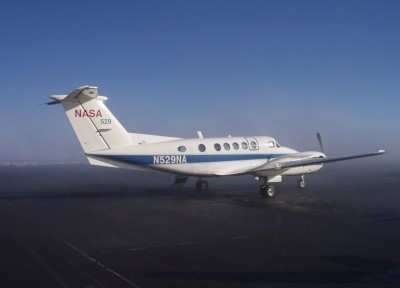
NASA B-200
Hurricane and Severe Storm Sentinel. Principal
Investigator Scott Braun, NASA's Goddard Space Flight Center in
Greenbelt, MD.
The prediction of the intensity of hurricanes is not as reliable as
predictions of the location of hurricane landfall, in large part
because of our poor understanding of the processes involved in
intensity change. This investigation focuses on studying hurricanes
in the Atlantic Ocean basin using two NASA Global Hawks flying high
above the storms for up to 30 hours. The Hawks will deploy from
NASA's Wallops Flight Facility in Virginia during the 2012-14
Atlantic hurricane seasons.
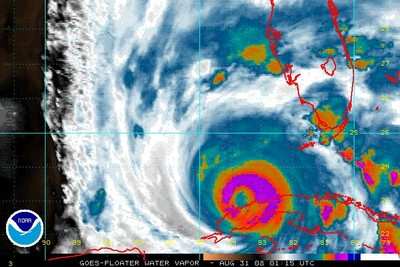
"These new investigations, in concert with NASA's
Earth-observing satellite capabilities, will provide unique new
data sets that identify and characterize important phenomena,
detect changes in the Earth system and lead to improvements in
computer modeling of the Earth system," said Jack Kaye, associate
director for research of NASA's Earth Science Division in the
Science Mission Directorate.
Langley manages the Earth System Pathfinder program for the
Science Mission Directorate. The missions in this program provide
an innovative approach to address Earth science research with
periodic windows of opportunity to accommodate new scientific
priorities.
 Aero-News: Quote of the Day (04.28.25)
Aero-News: Quote of the Day (04.28.25) ANN's Daily Aero-Term (04.28.25): Decision Altitude (DA)
ANN's Daily Aero-Term (04.28.25): Decision Altitude (DA) ANN's Daily Aero-Linx (04.28.25)
ANN's Daily Aero-Linx (04.28.25) Airborne-Flight Training 04.24.25: GA Refocused, Seminole/Epic, WestJet v TFWP
Airborne-Flight Training 04.24.25: GA Refocused, Seminole/Epic, WestJet v TFWP Aero-News: Quote of the Day (04.29.25)
Aero-News: Quote of the Day (04.29.25)








